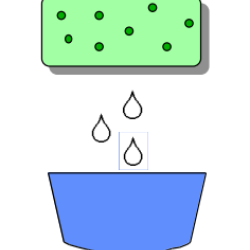Source Institutions
Source Institutions
Add to list Go to activity
Activity link broken? See if it's at the internet archive

In this math lesson, learners practice estimation and measurement skills as they move from station to station calculating length, volume, weight, and area. At each station, learners first estimate, measure, and then compute the difference between their estimation and the actual measurement. They estimate and measure marbles to the nearest gram and squeeze water-saturated sponges to practice measuring in millimeters. Learners practice linear measurement estimation skills by throwing cotton balls and rolling toy cars. Learners determine if they are a square or a rectangle by measuring and comparing arm span and height. Finally, each learner determines the area of his/her foot by counting and computing the area by constructing a rectangle to approximate the area.
- 30 to 45 minutes
- 1 to 2 hours
- 1 cent - $1 per group of students
- Ages 8 - 11
- Activity, Lesson/Lesson Plan
- English
Quick Guide
Materials List (per group of students)
- A large shoe
- Direction Cards for each station
- Information Cards for each station
- Container with about 50 marbles
- Metric scale or balance
- Sponge
- Bucket of colored water
- 500 ml beaker or measuring cup
- 4 Toy cars
- 2 Meter sticks
- 2 Tape measures
- 4 Cotton balls
- Marker
- Graph paper
- Ruler
- Activity Sheet: Centimeter Square Graph Paper
- Meter stick
- Activity Sheet: Measurement Stations
- Activity Sheet: Cooperative Group Rubric
Subjects
-
Life Sciences
- Human Body
-
Mathematics
-
Data Analysis and Probability
- Data Analysis
- Data Collection
- Data Representation
-
Measurement
- Units of Measurement
- Size and Scale
-
Data Analysis and Probability
-
Physical Sciences
-
Structure and Properties of Matter
- Mass and Weight
- Volume and Density
-
Structure and Properties of Matter
Informal Categories
- Toys
Audience
To use this activity, learners need to:
- see
- read
- be mobile
- touch
Learning styles supported:
- Involves teamwork and communication skills
- Involves hands-on or lab activities
Other
This resource is part of:
Access Rights:
- Free access
By:
Rights:
- All rights reserved, PBS, 2012
Funding Source:
- US Department of Education
